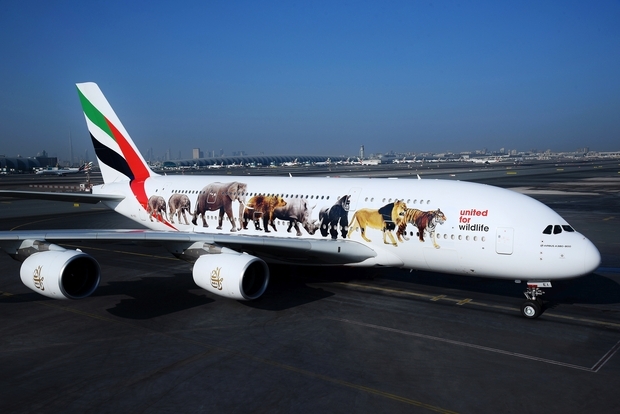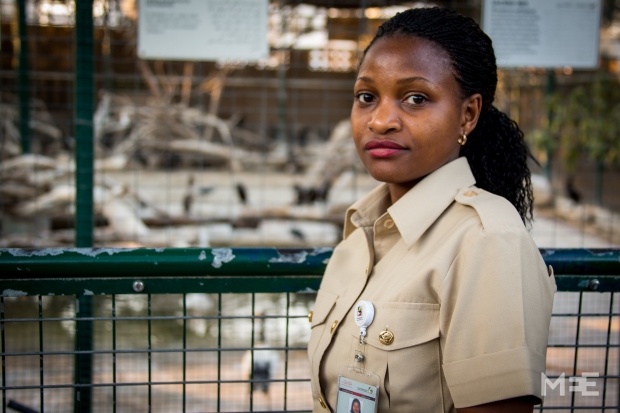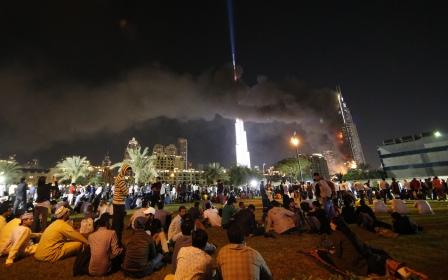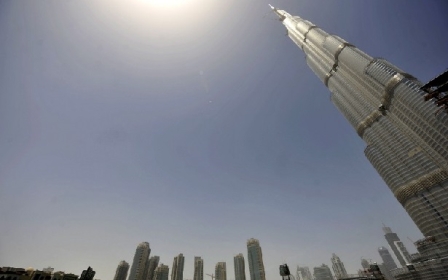UAE's dangerous love for endangered species
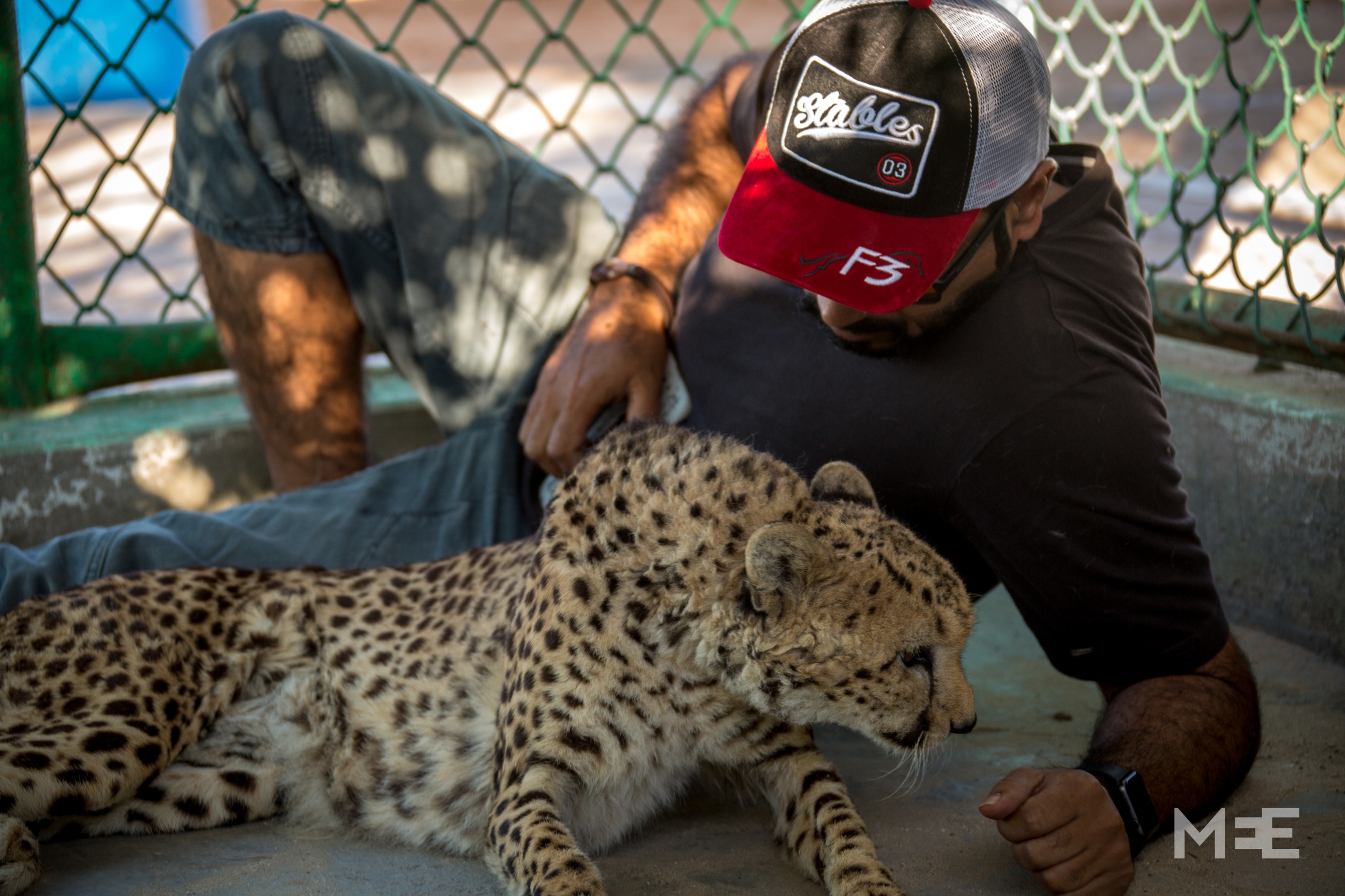
Last Friday, a young lioness was spotted in the al-Barsha area of Dubai. Less than one-year-old and clearly distressed, it was rescued and taken to Dubai Zoo for quarantine. The discovery of a big cat so far from its natural habitat, prowling the streets of the city, was far from unprecedented.
Many affluent Emiratis have acquired a taste for dangerous, endangered animals, paying large sums to procure them from the black market. Viewed as enviable status symbols, as play toys for Gulf playboys, the UAE - like other countries in the region - has many exotic species locked up behind closed doors of mansions of the nouveau riche: lions, tigers, leopards, cheetahs, and panthers, to name a few.
There remains a steady trickle of such sightings and seizures. Publics zoos are often where the animals end up after being "donated" by their owners.
“The owners often only keep them for a few months, maybe a year, before they tire of them… they never say where they get them from,” says Nanyunja Peninah, foreman at Dubai Zoo. The owners are usually bashful when they "donate" their pets to the zoo.
“On average we get about 10 donations of animals a month to the zoo… two or three are usually endangered,” says Peninah.
Not all of them stay locked up. A few years ago there was a spate of sensational exotic animal sightings in residential neighbourhoods in UAE: a young cheetah roaming the streets of Abu Dhabi, a tiger leaning out of the blacked-out windows of a vehicle in central Dubai.
The problem was highlighted by Emirates Airline in November 2015. In collaboration with an alliance of animal protection charities, it had the hull of two of its A380s overlaid with a 42.5-metre design featuring endangered species to raise awareness of the illegal wildlife trade and communicate the need for urgent action.
Asides from this act of corporate benevolence - a beautiful façade on an aircraft - there is an actual, and deeply concerning, link between endangered species, the UAE, wealth and international transport.
Cruel, oblivious masters
The glimpses of exotic pets in bizarre public sightings, perhaps awful and wonderful at the same time, masks an even darker truth than the wanton recklessness of the owners of these big cats: they don't know how to look after them. Owners often treat the animals cruelly and sometimes mutilate them in order to render them harmless. The results can be deadly for the animals.
Some owners demand that their "pets" be declawed and have their teeth removed. The procedure alters the way animals walk, causing chronic back and joint pain - although vets in the UAE see far worse consequences.
On a monthly basis, specialist vets are brought dead endangered animals that were once pets. Most of the time it is the owners’ lack of knowledge or resources, with animals succumbing to preventable diseases or malnutrition.
For big cats, UAE owners often only feed animals raw chicken, which is insufficient for their diet, particularly for young animals. “Most owners don’t even know what quantity to feed the animals, let alone the different [nutritional] requirements,” says Peninah. Malnutrition can cause irreversible, painful problems from hind-leg paralysis and under-development of the nervous system.
Some owners simply leave a donkey or other animal to their pet big cat, naively thinking that it is a natural way for them to hunt and eat.
“After being raised in captivity, the animals have neither instinct nor knowledge themselves of how to hunt, and end up attacking the creature without killing it,” says Jasem Ali, an Emirati trader and conservationist who (in collaboration with Ras al-Khaimah Zoo) rescues and rehabilitates large animals that become unwanted pets. “Eventually [the cat] devours a limb or parts of the creature’s back whilst it is still alive, obviously in excruciating pain. It’s very terrible.”
In many cases owners find they cannot maintain these "pets" or they tire of them.
Endangered, domesticated animals have been seized from owners, relinquished to private zoos, or released by them before being captured by authorities. As animals raised in captivity cannot be released into the wild, and there is lack of capacity in conservations to absorb returning animals, some animals which cannot be accommodated in private zoos are put down.
Illegal trade: lucrative, adaptive and elusive
Much of the brokering for illicit wildlife trade is done online: online ad platforms and social media appear to be the main mediums.
As part of a 2014 online investigation, the International Fund for Animal Welfare (IFAW) found that there were 120 online ads in the UAE for internationally protected live animals. In comparison, China, which is widely believed to be the largest consumer of endangered species in the world, had 124 such live animal ads - only a handful more. In contrast to other Gulf nations, only five were found in Qatar, seven in Kuwait, and 10 in Bahrain: the problem seemed most acute in UAE.
"The UAE government responded to our findings, and online ad platforms selling endangered live animals were closed down - but the problem simply migrated to other modes of social media," says Elsayed Mohamed, Middle East regional director for IFAW.
More broadly, after the drugs and weapons trade, animal trafficking is the third most lucrative illicit sector in the world; in comparison to drugs and weapons, illegal wildlife trade is relatively low cost and low risk.
The issue, which has spiked in recent years, was recognised in mid-2013 by the UN Commission on Crime Prevention and Criminal Justice, as a "serious form of organised crime". It called for strengthened penalties against criminal syndicates and networks profiting from the illegal trade. However, the networks are quick to adapt, avoiding detection and prosecution.
UAE is often regarded as one of the major nodes for illegal trafficking of animals or their body parts, particularly as it is a major transit centre between Africa and Asia. There are over 20 entry points into the country; customs officers play a vital role in curbing this trafficking, and have successfully carried out a consistent series of intercepts of illegal smuggling of small endangered species - particularly monkeys and reptiles, or animal body parts such as ivory.
But a 2015 documentary report demonstrates that smugglers have in-depth knowledge of the airports - inside information from customs officials as to which airports have x-ray checks, how many hours it takes before a suitcase or briefcase is x-rayed, and which connections are not screened by UAE officials.
"Some trade isn't even through official ports at all - it happens on the border with Saudi Arabia," says Jasem Ali.
UAE legislation controlling the trade
In 1990, the UAE endorsed the Convention on International Trade of Endangered Species (CITES), which regulates the trade. But in 2001, WWF successfully called for a ban against the UAE for non-compliance with the convention. After corrective actions, the ban was partially lifted in 2002.
According to the UAE’s most recent 2015 report filed to CITES, prohibitions or conditions for the trade, taking, and transport of endangered species had been adopted in the UAE. But importantly, the conditions for possession had not.
Rules concerning ownership of endangered species of pets vary between each of the seven emirates, but there exists no federal law. Some parts of the UAE have adopted stringent legislation, particularly the Emirate of Sharjah, which in 2014 criminalised breeding or possession of exotic animals in that emirate; but most emirates have not.
For years it was possible to import exotic pets into one emirate, and then transport them overland to others, circumventing the problem.
"New draft legislation is being considered by UAE lawmakers to regulate or prohibit ownership of certain animals, which is clearly positive," says IFAW's Mohamed. However, on its own, it will fail.
"We need to change social attitudes in Emirati youth towards exotic pets and we need to control the channels of social media in which this illegal trade is now thriving.
"Changing public attitudes is more important than drafting legislation."
Further, whilst legislation protecting endangered species was fully developed, according to the report "implementing regulations" were rated as "partially inadequate". No information was provided regarding relevant criminal prosecutions or any other court actions of CITES-related violations, nor on any incentives for assisting the enforcement of the law.
Without enforcement, the current legislation seems as toothless as the declawed animals it intends to protect.
Example, not exception
Undoubtedly, there has been progress in developing a legislative framework that protects endangered animals in the UAE. And yet, with no let up in demand, the illicit supply of endangered species continues.
What is clear is that whilst there is still strong demand in the UAE for exotic animals amongst its economic elites, there will always be supply and trafficking of endangered animals.
"It is still a regional problem, common in many countries of the Arabian Gulf; reducing demand in the UAE by itself may simply transfer the problem to another country," says Mohamed.
until this changes, sightings like that of the young lioness rescued in al-Barsha last Friday will surely continue.
New MEE newsletter: Jerusalem Dispatch
Sign up to get the latest insights and analysis on Israel-Palestine, alongside Turkey Unpacked and other MEE newsletters
Middle East Eye delivers independent and unrivalled coverage and analysis of the Middle East, North Africa and beyond. To learn more about republishing this content and the associated fees, please fill out this form. More about MEE can be found here.


